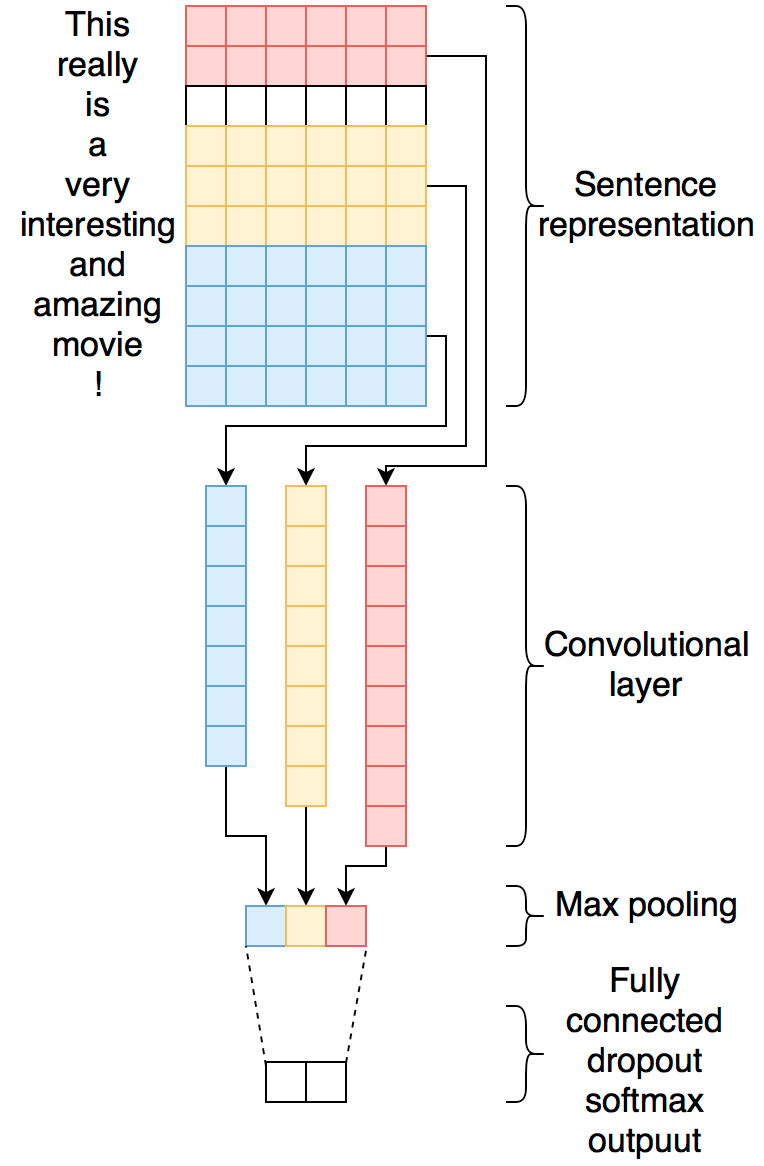A Deep Learning based Model using Review Associated Feature Extraction Approach for Sentiment Analysis
Main Article Content
Abstract
With the advancement of internet technologies, in the present days, online forums, social media platforms and e-commerce sites have made the product reviews process very easy. There are a lot of mobile applications, websites and forums where consumers used to share and circulate their opinions, experiences, ideas and views regarding products, brands and services. In consequence, online user reviews have become a deciding factor for many consumers prior to purchasing their selected items. The sentiment analysis is a technique to extract sentiments, feelings and insights from customer reviews and public texts. Therefore, plenty of businesses perform sentiment analysis in order to more thoroughly comprehend of their customer opinions and suggestions regarding their products and services. Furthermore, a number of scientific researchers also have a keen interest in classifying customer reviews into a set of labels employing text classification techniques. The objective of the this research work is to develop an approach to extract review associated features using Part-of-Speech (POS) tagging and design a CNN model to classify the reviews' sentiment as positive or negative. In this paper, an approach to extract review associated feature has been presented. Natural Language Processing (NLP) techniques are utilized for data preprocessing to remove uninformative data from reviews. Deep learning model CNN is used for sentiment classification and Amazon mobile reviews dataset is used for the experiment. The proposed model is experimentally evaluated and provides enhanced performance than other models also provides improved accuracy of 97.23% on Amazon mobile review dataset.
Article Details
References
Singh J, Singh G, Singh R (2016) A review of sentiment analysis techniques for opinionated web text. CSIT 4:241–247
Shahana PH, Omman B (2015) Evaluation of features on sentimental analysis. Procedia Comput Sci 46:1585–1592. https://doi.org/10.1016/j.procs.2015.02.088
Parlar T, Özel SA, Song F (2018) QER: a new feature selection method for sentiment analysis. HCIS 8(1):1–19. https://doi.org/10.1186/s13673-018-0135-8
Liu CL, Hsaio WH, Lee CH, Lu GC, Jou E. Movie Rating and Review Summarization in Mobile Environment. IEEE Trans Syst Man Cybern. 2012a;42(3):397–407. https://doi.org/10.1109/tsmcc.2011.2136334.
Pannala NU, Nawarathna CP, Jayakody JTK, Rupasinghe L, Krishnadeva K. Supervised Learning Based Approach to Aspect Based Sentiment Analysis. 2016 IEEE International Conference on Computer and Informa- tion Technology (CIT). 2016. p 662–666.
Schouten K, Frasincar F. Survey on aspect-level sentiment analysis. IEEE Trans Knowl Data Eng. 2016;28(3):813–30. https://doi.org/10.1109/tkde.2015.2485209.
Trilla A, Alias F. Sentence-based sentiment analysis for expressive text-to-speech. IEEE Trans Audio Speech Lang Process. 2013;21(2):223–33. https://doi.org/10.1109/tasl.2012.2217129.
de Kok S, Punt L, van den Puttelaar R, Ranta K, Schouten K, Frasincar F. Review-aggregated aspect-based sentiment analysis with ontology features. Progr Artif Intell. 2018;7(4):295–306. https://doi.org/10.1007/s13748-018-0163-7.
Ayyub K, Iqbal S, Munir EU, Nisar MW, Abbasi M. Exploring diverse features for sentiment quantification using machine learning algorithms. IEEE Access. 2020;8:142819– 31. https://doi.org/10.1109/access.2020.3011202.
Nooruldeen Mohammed Kareem, & Asma Thamir Ibraheem. (2023). Developing a Frame Design for Airport Pavements Maintenance Management System. International Journal of Intelligent Systems and Applications in Engineering, 11(4s), 498–508. Retrieved from https://ijisae.org/index.php/IJISAE/article/view/2718.
Flyand. A hybrid framework for sentiment analysis using genetic algorithm based feature reduction. IEEE Access. 2019;7:14637–52.
Munuswamy S, Saranya MS, Ganapathy S, Muthurajkumar S, Kannan A. Sentiment analysis techniques for social media-based recommendation systems. Nat Acad Sci Lett. 2021;44(3):281–7. https://doi.org/10.1007/s40009-020-01007-w.
Oyebode O, Alqahtani F, Orji R. Using machine learning and thematic analysis methods to evaluate mental health apps based on user reviews. IEEE Access. 2020;8:111141–58. https://doi.org/10.1109/access.2020.3002176.
Brian Moore, Peter Thomas, Giovanni Rossi, Anna Kowalska, Manuel López. Machine Learning for Customer Segmentation and Decision Making in Marketing. Kuwait Journal of Machine Learning, 2(4). Retrieved from http://kuwaitjournals.com/index.php/kjml/article/view/218.
Khan A, Gul MA, Zareei M, Biswal RR, Zeb A, Naeem M, Saeed Y, Salim N. Movie review summarization using supervised learning and graph-based ranking algorithm. Comput Intell Neurosci. 2020;2020:1–14. https://doi.org/10.1155/2020/7526580.
Zhu L, Li W, Shi Y, Guo K. SentiVec: learning sentiment-context vector via kernel optimization function for sentiment analysis. IEEE Trans Neural Netw Learn Syst. 2021;32(6):2561–72. https://doi.org/10.1109/tnnls.2020.3006531.
Deriu J, Lucchi A, De Luca V, et al (2017) Leveraging large amounts of weakly supervised data for multi-language sentiment classification. In: Proceedings of the 26th International Conference on World Wide Web, pp 1045–1052
Dr. S. Praveen Chakkravarthy. (2020). Smart Monitoring of the Status of Driver Using the Dashboard Vehicle Camera. International Journal of New Practices in Management and Engineering, 9(01), 01 - 07. https://doi.org/10.17762/ijnpme.v9i01.81
Kim H, Jeong YS (2019) Sentiment classification using convolutional neural networks. Appl Sci 9(11):2347
Zhang Y, Zhang Z, Miao D et al (2019) Three-way enhanced convolutional neural networks for sentence-level sentiment classification. Inf Sci 477:55–64
Kumar R, Pannu HS, Malhi AK. Aspect-based sentiment analysis using deep networks and stochastic optimization. Neural Comput Appl. 2020;32(8):3221–35. https://doi.org/10.1007/s00521-019-04105-z
Bao T, Ren N, Luo R, Wang B, Shen G, Guo T. A BERT-based hybrid short text classification model incorporating CNN and attention-based BiGRU. J Organ End User Comput. 2021;33(6):1–21.
Meena G, Mohbey KK, Indian A. Categorizing sentiment polarities in social networks data using convolutional neural network. SN Comput Sci. 2022;3:116.
Zhang T, Gong X, Chen CLP. BMT-Net: broad multitask transformer network for sentiment analysis. IEEE Trans Cybern. 2021;52(7):6232–43. https://doi.org/10.1109/tcyb.2021.3050508.
M Qorich, R El Ouazzani. Text sentiment classification of Amazon reviews using word embeddings and convolutional neural networks. The Journal of Supercomputing volume 79, pages11029–11054 (2023)
Kulkarni, L. . (2022). High Resolution Palmprint Recognition System Using Multiple Features. Research Journal of Computer Systems and Engineering, 3(1), 07–13. Retrieved from https://technicaljournals.org/RJCSE/index.php/journal/article/view/35
Wu F, Shi Z, Dong Z, Pang C, Zhang B (2020) Sentiment analysis of online product reviews based on SenBERT-CNN, 2020 International Conference on Machine Learning and Cybernetics (ICMLC), pp 229–234, https://doi.org/10.1109/ICMLC51923.2020.9469551.
Kim Y, Convolutional Neural Networks for Sentence Classification, arXiv preprint, 2014, arXiv: 1408.5882.

